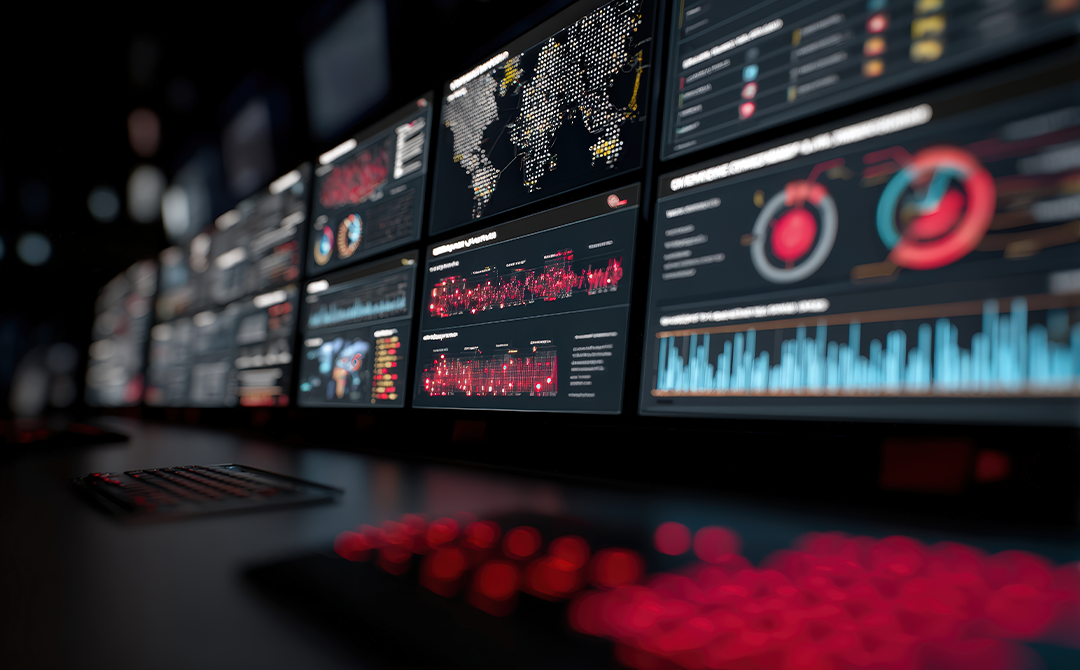
Announced during the Data and AI Summit 2025 in June, Multi-Agent Supervisor is the no-code feature of Agent Bricks and a very much welcomed addition to the Agent Bricks family. As the name suggested, Multi-Agent Supervisor allows AI engineers to stitch together multiple agents to achieve the truly agentic workflow.
Before diving into the Multi-Agent Supervisor, we need to understand the architecture and how it is achieved. The below diagram illustrates a workflow of a collection of agents. While these agents can do the work independently, we try to mimic the human workflow in agents as well because the neural network is also model after how human brains work.
Figure 1: Multi-Agent Supervisor workflow
What are the agents available?
Multi-Agent Supervisor supports three different types of agents.
- Genie as an agent – Genie chatrooms are very popular text-to-sql tool for business users who want to understand the data in Unity Catalog without learning SQL. It can now be used as an agent
- Agent Bricks agents – there are 3 use cases that Agent Bricks can be used as an agent:
- Information Extraction – Structured response use case, the agent can both generate or extract information from provided documents and give JSON output
- Custom LLM – Allows input of samples that contains labelled or unlabeled data. It also allows the input of evaluation criteria to enhance clarity of the output.
- Knowledge Assistant – Retrieval Augmented Generation use case. This is probably the most common use case because majority of the AI interaction is still happening on the chat interface.
- MCP servers – this opens up the possibility of connecting tools and agents outside of Databricks. Additionally, Databricks Unity Catalog functions can also be served as MCP servers.
Why use Multi-Agent Supervisor?
The evolution of GenAI agents is faster than the smart phone apps era. Even if you have not developed phone apps before, you’d at least understand that there is an Apple version of the app and an Android version of the app. These silos are still around in 2026, almost 20 years since Steve Job introduced iPhone. Databricks is trying to make it easy to orchestrate agent workflows by providing a standard interface called ResponseAgent. This is what Multi-Agent Supervisor is behind the scenes.
Figure 2: Databrick’s ResponseAgent interface
- Unified interface – Multi-agent Supervisor standardizes everything in a user interface so there is no need to worry about how to code it up
- Consistent Input and Output – the endpoint is managed by Databricks but is compatible with other popular tools like OpenAI, Langchain and LlamaIndex
- No change to core agent logic / code – bring the Genie room, UC function or MCP server, there is no need to worry about creating additional logics
- Compatible with Databricks features – Databricks as an open platform will allow connectivity with other agents, even if it’s a no-code solution
Putting it in action
After learning about all the good things about Multi-Agent Supervisor, we definitely need to put it in action and create a very simple use case by using Genie and Knowledge Assistant.
Genie chatroom
We will build a chatroom with chess games from pgnmentor.com. PGNs are move by move game recorded in standard text format. For example, below is the PGN format of the 29th game of the 1992 match played in Yugoslavia between Bobby Fischer and Boris Spassky:
Listing 1: PGN of Bobby Fischer vs Boris Spassky in 1992
There are quite a few pieces of information that can be extracted from the PGN, including:
- Player’s name
- Player’s side
- Game result
- Number of moves
- Centipawn loss per move, which is a score compared to the best move with a chess engine
- Move commentary can also be included in the PGN
We can parse these information (e.g. using python chess) and save them in a table. The details are beyond the scope of this article.
Knowledge Assistant
We can’t all play like chess masters, but they are inspirations to the next generation. Imagine if you ran a chess education center for the evolving masters, and you want to allow students to ask questions about the curriculum. This is an excellent use case where we can use the developed content as a RAG chatbot.
Below are the steps to build out a RAG:
- Determine how to parse out the PDFs and save them into a table
- Save the parsed content into a table
- Determine the chuck size and overlap size as well as the embedding model
- Save these into a vector index
- Build LlamaIndex or LangChain for chatting
- Build a chatbot on top of the chain
- Share with stakeholders and iterate on quality
Too many steps? Fortunately, Knowledge Assistant is here to rescue. As shown below, with a few clicks we are able to deploy a chatbot.
Figure 3: Knowledge Assistant user interface
The final step – Multi-Agent Supervisor
Recall in Figure 1 our goal was to route to multiple agents in one unified interface. Multi-Agent Supervisor allows us literally to choose from a dropdown on which agent do we want to connect. There is no coding required and no configuration to begin with, but we can provide examples to improve quality if we want.
Figure 4: Multi-Agent Supervisor configuration
With everything setup, we will try out the new chess agent to see if it can answer various questions.
|
Question 1: Who won the most chess games? What to expect? This question is a bit open-ended. The goal is to test if the agent understands that we have a Genie room that can answer this question. Note we didn’t put in any routing logic. |
As seen in Figure 5 below, it is showing some statistics from the chess game table. Genie chatroom is able to understand the context of “most games” and “who” because it performed an aggregation on the player and it didn’t attempt to query the lecture pdf to see if they taught chess history.
Figure 5: Multi-Agent Supervisor routing to Genie
|
Question 2: how do I win so many games like Carlsen? Anything you recommend me to work on? What to expect? This time we want the agent to answer questions from the lessons because the question got nothing to do with the chess games. |
As seen in Figure 6 and Figure 7 below, the agent tried multiple attempts to find relevant contents and quoted the pdfs as reference. All of these are provided out of the box without a single line of code.
Figure 6: Multi-Agent Supervisor routing to RAG
Figure 7: Multi-Agent Supervisor further summarizes the ask
Conclusion
Multi-Agent Supervisor is a powerful tool to connect different agents within or outside Databricks. There is no coding required, and the results are instant. Quality improvement feature is also built in to further fine-tune the agent to be able to answer relevant questions. Not only this provides a quick way to prototype but to iterate a production agent in one place, users don’t need to worry all the nobs that they need to tune or to learn a new skill be it LangChain, LangGraph, LlamaIndex, Crew AI, Swarm, and so on and so forth, and the list gets longer by the day.
Focus on business outcome and worry less on coding is crucial to win in today’s GenAI era!

AUTHOR - FOLLOW
Jason Yip
Director of Data and AI, Tredence Inc.
Next Topic
The Digital Twin Imperative: Blueprint for Industrial Resilience & Sustainable Growth
Next Topic




